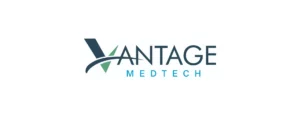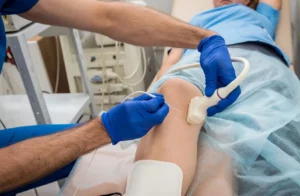
Are you a medical device developer with questions about when and how to file for regulatory approval? Navigating the complexities of the FDA premarket approval process can be daunting. But it doesn’t have to be – with careful planning and a good understanding of Premarket Approval (PMA) and 510(k) requirements, you can ensure that the regulatory strategy for your device is on target. This blog post will help guide you through this potentially confusing terrain, giving insights into FDA medical device classification, the difference between a 510(k) vs. PMA device clearance, and more importantly, provide practical guidance on preparing a successful FDA submission the first time.
FDA Device Classification
The FDA is responsible for regulating medical devices. The FDA classifies medical devices into one of three categories: Class I, Class II, or Class III. Class I devices are low-risk and are typically considered to be safe, like tongue depressors. Class II devices are medium-risk and include things like Ultrasound machines. Class III devices are high-risk and include things like pacemakers.
The FDA regulates medical devices differently depending on their classification. For example, Class I devices do not require premarket approval from the FDA, while Class III devices do. The FDA also has different requirements for labeling and marketing these devices. Determining the correct device classification is essential to determine the correct regulatory strategy for your device.
What is the Difference Between a PMA vs. 510(k) Submission?
Premarket approvals and 510(k) submissions are both types of regulatory submissions that medical device manufacturers can make to the FDA. A PMA is a submission of extensive and meticulous scientific and regulatory paperwork to verify that a Class III medical device is both safe and effective. An FDA 510(k) submission is a request to approve a new medical device that is similar to (or substantially equivalent to) an existing device (a predicate), or to approve a change to an existing medical device that has already obtained clearance.
The main difference between a premarket approval vs. 510(k) submission is that a premarket approval submission is required for high-risk medical devices, while a 510(k) approval is required for medical devices that can verify substantial equivalence to a predicate device. The FDA reviews PMA submissions more closely than 510(k) submissions. Submitting for PMA approval is a time-intensive process that necessitates supporting evidence such as clinical trial data, to demonstrate the device’s efficacy and safety. Class III devices require PMA approval and submission.
Determining the right classification for your device is followed by determining its regulatory path to market. These items combine into a well-defined regulatory strategy that will ensure that your design and development process includes all applicable regulatory requirements.
What is a 510(k) Process?
The 510(k)premarket approval process is a regulatory submission process that the FDA has in place to evaluate medical devices before they are cleared for the market. Most Class II and some Class I devices must undergo a 510(k) application, which requires demonstration of substantial equivalence to another legally U.S. marketed device. Substantial equivalence means that the device is as safe and effective as the predicate. Substantial equivalence does not mean the devices must be identical, but the devices must have the same intended use and any differences in technological characteristics do not raise different questions of safety and effectiveness.
When a 510(k) premarket notification is submitted, the FDA then determines whether the device is as safe and effective as the predicate device by reviewing the scientific methods used to evaluate differences in technological characteristics and performance data. This performance data can include clinical data and non-clinical bench performance data, including engineering performance testing, sterility, electromagnetic compatibility, software validation, biocompatibility evaluation, among other data.
The 510(k) medical device process can be lengthy and expensive, so it’s important for manufacturers to make sure their data is as thorough and accurate as possible. The FDA will often request additional information from manufacturers during the 510(k) approval process, so it’s important to be responsive to their requests. If a manufacturer can’t provide adequate data to meet 510(k) submission requirements or if their device poses too great of a risk to patients, the FDA can refuse to clear it for sale.
The Premarket Approval Process
Class III medical devices are the highest risk and those that support or sustain human life, are of substantial importance in preventing impairment of human health, or which present a potential, unreasonable risk of illness or injury. Eventually all Class III devices will require a medical device PMA. Few exemptions remain for some devices introduced on or before May 28, 1976.
Premarket approval is the most stringent type of device marketing application required by FDA. PMA approval is based on a determination by FDA that the PMA contains sufficient valid scientific evidence to assure that the device is safe and effective for its intended use(s). The premarket approval process includes Technical, Non-clinical Laboratory Studies, Clinical Investigation sections in the application.
510(k) Exempt Devices
Most Class I and some Class II devices are exempt from premarket approval and 510(k) clearance. However, the manufacturers of these exempt devices must register their establishment and list generic category or classification names.
Medical Devices vs. Wellness Devices
Medical devices and wellness devices are both designed to improve the quality of life for the people that use them, but there are some key differences between the two. A medical device is a tool or machine that is used to diagnose, treat, or prevent disease. Wellness devices, on the other hand, are not intended to treat or cure any specific ailment but are instead meant to promote general health and well-being.
A big difference between medical devices and wellness devices is that medical devices are regulated by the FDA and may have to go through a premarket approval or 510(k) process. This means that they have to follow the approval process for medical devices, meeting certain safety and quality standards in order to be marketed and sold. Wellness devices, on the other hand, are not subject to the same level of regulation. This means that there may be less oversight when it comes to their safety and effectiveness.
Tips for a Successful FDA Submission
For most Class II and Class III medical devices to be sold in the US, it must first be approved/cleared by the FDA. There are several steps involved in submitting a product to the FDA. The most important step is completing all necessary documentation, including verification and validation. This documentation ensures that the product meets all FDA requirements. The documentation should also be correctly formatted. Sometimes, a pre-submission meeting with the FDA can clear up any questions about your submission before you enter the review stages, particularly in the case of a premarket approval or 510(k) submission.
We can help. The FDA submission process can be a confusing and daunting task for medical device manufacturers. If you need help with your FDA premarket approval or 510(k) submission, we can assist you in determining the right regulatory strategy for your product and guide you through the process from start to finish. Our success rates are among the highest in the industry because we understand what it takes to get marketing clearance through years of consistent interaction with the FDA. Contact us today to learn more about how our regulatory compliance consultants can help you obtain marketing clearance for your device.





